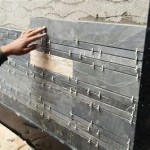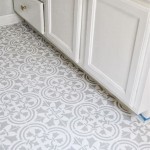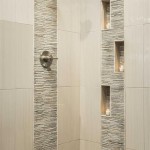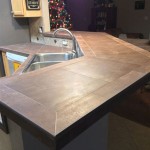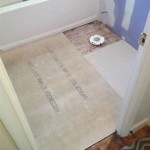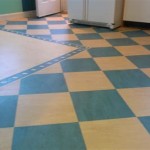What Board Do You Put Under Tile?
When installing tile, it’s not simply a matter of laying tile directly onto a subfloor. A layer of board, known as underlayment, sits between the subfloor and the tile, serving a crucial role in the successful installation and long-term performance of your tile flooring. This underlayment provides a stable and even surface for the tile, ensuring a smooth finish and preventing cracking or movement.
There are several different types of boards used as underlayment, each with its own qualities and applications. Understanding the different types and their properties is critical in choosing the right board for your project.
Types of Underlayment Boards
The most common types of boards used under tile include:
1. Cement Backer Board
Cement backer board is a rigid, moisture-resistant board made from Portland cement and fiberglass mesh. It is strong and durable, making it ideal for high-traffic areas and wet environments like bathrooms and kitchens. Cement backer board is often used in conjunction with thinset mortar, a cement-based adhesive that bonds the tile to the board.
2. M.D.I. (Medium Density Overlay) Board
M.D.I. board is a lightweight and versatile option made from a core of extruded polystyrene foam, covered with fiberglass mesh and a cementitious coating. It is known for its excellent moisture resistance and dimensional stability. M.D.I. board is often preferred for its ease of installation and its ability to reduce noise transmission.
3. Plywood
Plywood is a traditional and cost-effective option for underlayment. It is typically made from thin layers of wood veneer glued together with alternating grain directions for strength. Plywood can be used under tile, but it is not as moisture-resistant as other options and may require additional waterproofing measures.
4. Concrete Board
Concrete board is a dense and durable option made from Portland cement and aggregate. It is highly moisture-resistant and fire-resistant, making it suitable for use in areas with high humidity or fire hazards. Concrete board is typically used in conjunction with a moisture-resistant membrane.
Factors to Consider When Choosing Underlayment
The best underlayment for your project will depend on several factors, including:
1. Subfloor Condition
The condition of your subfloor plays a crucial role in choosing the appropriate underlayment. If your subfloor is uneven or has significant imperfections, you will need a stronger and more rigid underlayment, such as cement backer board.
2. Moisture Levels
In areas with high moisture levels, such as bathrooms or kitchens, it is essential to use a moisture-resistant underlayment. Cement backer board, M.D.I. board, and concrete board are all suitable options.
3. Tile Type
Different tile types have different weight requirements and characteristics. If you are using large or heavy tiles, you will need a strong underlayment that can withstand the weight.
4. Budget
The cost of underlayment can vary significantly, depending on the type and quality. Budget-friendly options include plywood and some types of M.D.I. board, while premium options include cement backer board and concrete board.
Installation Considerations
Once you have selected the appropriate underlayment, it is crucial to install it correctly to ensure proper tile installation and performance. The installation process will vary depending on the type of underlayment you choose. Here are some general guidelines for installing underlayment:
1. Preparation
Before installing underlayment, ensure your subfloor is clean, dry, and level. Any imperfections or unevenness should be addressed before proceeding.
2. Moisture Barrier
In areas with high moisture levels, it is essential to install a moisture barrier under the underlayment. This barrier prevents moisture from penetrating the subfloor and damaging the tile.
3. Fastening
Secure the underlayment to the subfloor using appropriate fasteners, such as screws or nails. Make sure the fasteners are long enough to penetrate the subfloor but not extend through the underlayment.
4. Joints
When installing multiple sheets of underlayment, ensure the joints are staggered and properly supported. This will create a strong and even surface for the tile.
By carefully considering the factors above and following proper installation procedures, you can ensure that your tile flooring is installed on a stable and durable foundation, leading to a long-lasting and aesthetically pleasing finished product.

How To Prepare A Subfloor For Tile Installation The Home Depot

How To Prepare A Subfloor For Tile Installation The Home Depot

How To Prepare A Subfloor For Tile Installation The Home Depot

Blog Expert Advice How To Tile Onto Wood Plywood Or Chipboard

Durock Cement Board Do S And Dont

Install A Ceramic Tile Floor

How To Install Hardie Backer Cement Board On Floors James Pros

Materials Needed To Lay Tile Floor The Best Tools Rubi Blog Usa

Why You Should Use Schluter Ditra On Your Tile Job

Hardie Backer Boards Everything You Need To Know Walls And Floors
Related Posts


